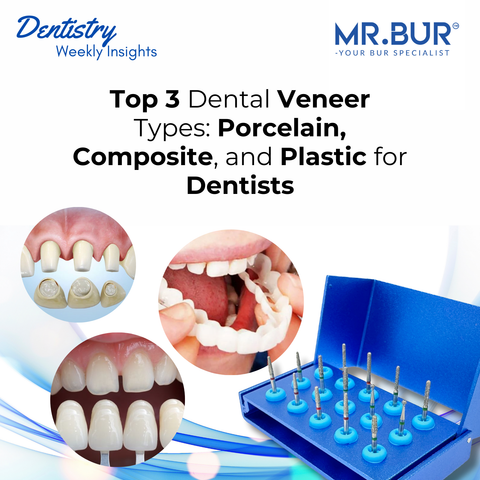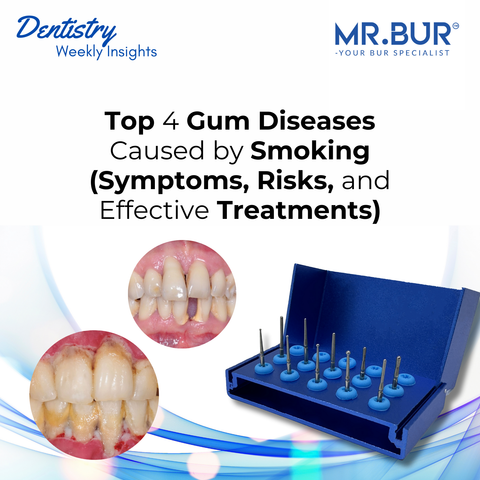Aggressive periodontitis presents a unique challenge for dental practitioners, characterized by rapid periodontal destruction in systemically healthy patients with minimal plaque and calculus. Its two primary forms, Localized Aggressive Periodontitis (LAP) and Generalized Aggressive Periodontitis (GAP), differ significantly in clinical presentation and treatment requirements. Accurate differentiation is crucial for tailoring effective non-surgical therapies, such as scaling and root planing (SRP), and optimizing patient outcomes. This blog equips general dentists with a detailed, evidence-based comparison of LAP and GAP, offering practical diagnostic and treatment strategies to enhance clinical decision-making and practice efficiency.
Understanding Aggressive Periodontitis
Aggressive periodontitis, features swift attachment loss and bone destruction, typically in younger patients, driven by specific microbial pathogens and host immune responses. Unlike chronic periodontitis, it progresses rapidly with less visible plaque, necessitating targeted intervention. LAP and GAP share these traits but vary in scope, distribution, and management complexity, directly influencing how dentists approach diagnosis and therapy.
Localized Aggressive Periodontitis (LAP)
-
Distribution: Affects specific teeth, primarily incisors and first molars (2–6 teeth), with localized deep pockets (≥6 mm).
-
Bone Loss: Vertical, “arc-shaped” bone loss on radiographs, confined to affected sites, with preserved bone elsewhere.
-
Plaque and Calculus: Minimal, disproportionate to the severity of destruction.
Generalized Aggressive Periodontitis (GAP)
-
Distribution: Involves most or all teeth (≥14 teeth or ≥30% of sites), affecting multiple quadrants with widespread deep pockets (≥6 mm).
-
Bone Loss: Mixed vertical and horizontal bone loss across the dentition, visible on panoramic or periapical radiographs.
-
Plaque and Calculus: Variable, but still less than expected for the extent of destruction.
Epidemiology and Patient Profile
-
LAP:
-
Age: Adolescents (12–25 years), often during puberty.
-
Prevalence: ~0.1–0.5% in developed countries, higher in African American and Hispanic populations.
-
Risk Factors: Genetic predisposition, smoking, Aggregatibacter actinomycetemcomitans.
-
Systemic Health: Systemically healthy, no underlying medical conditions.
-
GAP:
-
Age: Young adults (20–35 years), older than LAP.
-
Prevalence: ~0.05–0.1%, rarer than LAP.
-
Risk Factors: Similar to LAP, plus immune dysregulation, stress, Porphyromonas gingivalis.
-
Systemic Health: Systemically healthy, may show elevated inflammatory markers.
Key Difference: LAP occurs earlier and is localized; GAP affects a broader age range with generalized involvement.
Diagnostic Considerations
-
LAP:
-
Diagnosis: Straightforward due to the characteristic incisor/molar pattern. Periodontal charting reveals localized pockets ≥6 mm with bleeding on probing (BOP). Periapical radiographs show vertical bone loss around affected teeth.
-
Microbial Testing: Highly predictive for A. actinomycetemcomitans, supporting antibiotic choice.
-
GAP:
-
Diagnosis: More complex due to widespread involvement. Comprehensive charting and full-mouth radiographs (panoramic or periapical) are needed to assess generalized pocket depths and bone loss.
-
Microbial Testing: Less specific, as multiple pathogens may be present, requiring broader diagnostic interpretation.
Key Diagnostic Difference: LAP’s focal nature simplifies diagnosis and coding, while GAP’s generalized presentation demands thorough assessment and documentation.
Management Strategies: Non-Surgical Therapy
Non-surgical SRP is the cornerstone for both LAP and GAP, but their differences necessitate tailored treatment protocols. Below are detailed, step-by-step strategies for each condition, incorporating a hybrid approach with ultrasonic scalers, hand curettes, and precision tools like the Mr. Bur Surgical Root Planing Kit, alongside antimicrobials, patient education, and follow-up to maximize clinical success.
Localized Aggressive Periodontitis (LAP)
Treatment Protocol:
-
Pre-Treatment Assessment:
-
Confirm diagnosis with periodontal charting (pockets ≥6 mm, BOP) and periapical radiographs showing vertical bone loss around incisors/molars.
-
Perform microbial testing to verify A. actinomycetemcomitans presence, guiding antibiotic selection.
-
Use intraoral cameras to visualize pockets and educate patients, emphasizing the urgency of early intervention to halt localized destruction.
-
Scaling and Root Planing (SRP):
-
Anesthesia: Administer local anesthesia (e.g., 2% lidocaine with epinephrine) to ensure comfort, given deep pockets.
-
Initial Debridement: Use slim-tip ultrasonic scalers with low power to remove soft debris and disrupt biofilms, minimizing trauma to thin gingival tissues.
-
Fine Instrumentation: Employ hand curettes for precise root planing, supplemented by the Mr. Bur Surgical Root Planing Kit for targeted removal of residual calculus in deep, narrow pockets (e.g., molar furcations). The kit’s fine-tipped, diamond-coated burs ensure smooth, calculus-free surfaces with minimal tissue disruption. Use short, controlled strokes and verify smoothness with an explorer.
-
Timing: Complete SRP in 1–2 sessions (60–90 minutes each), focusing on affected teeth to optimize efficiency.
-
Adjunctive Antimicrobials:
-
Local Delivery: Post-SRP, apply sustained-release minocycline microspheres (e.g., Arestin) in pockets ≥5 mm to reduce bacterial load. Clinical trials report an additional 1 mm pocket depth reduction.
-
Systemic Antibiotics: Prescribe amoxicillin (500 mg) + metronidazole (250 mg) three times daily for 7 days, starting at the SRP session, to target A. actinomycetemcomitans. Monitor for side effects (e.g., gastrointestinal upset).
-
Patient Education and Home Care:
-
Educate: Highlight LAP’s focal nature and high success rate, using radiographs to show bone loss and therapy benefits, emphasizing compliance.
-
Home Care: Recommend a soft-bristled toothbrush, interdental brushes, and 0.12% chlorhexidine rinse twice daily for 2 weeks post-SRP; advise against smoking and provide a written care plan.
-
Follow-Up and Maintenance:
-
Re-Evaluation (4–6 Weeks): Reassess pocket depths, BOP, and attachment levels. Target: pockets ≤4 mm, BOP <10%. Persistent pockets may require additional local antimicrobials.
-
Maintenance: Schedule cleanings every 3 months, performing targeted SRP on recurrent sites. Annual radiographs monitor bone stability.
-
Surgical Consideration:
-
Rarely needed, reserved for non-responsive sites with persistent pockets ≥5 mm or severe bone loss. Refer to a periodontist for flap surgery or guided tissue regeneration if indicated.
Generalized Aggressive Periodontitis (GAP)
Treatment Protocol:
-
Pre-Treatment Assessment:
-
Confirm diagnosis with comprehensive periodontal charting (widespread pockets ≥6 mm, BOP) and full-mouth radiographs showing mixed bone loss.
-
Consider microbial testing to identify pathogens (e.g., A. actinomycetemcomitans, P. gingivalis), though results may be less specific due to the mixed biofilm.
-
Use intraoral cameras to educate patients, highlighting the need for extensive treatment and lifelong maintenance to manage widespread disease.
-
Scaling and Root Planing (SRP):
-
Anesthesia: Administer local anesthesia quadrant-by-quadrant to manage discomfort across multiple sites.
-
Initial Debridement: Use ultrasonic scalers with medium power to remove bulk calculus and plaque, covering all affected quadrants systematically.
-
Fine Instrumentation: Employ hand curettes for meticulous root planing, supplemented by the Mr. Bur Surgical Root Planing Kit for precise debridement in deep pockets and furcations across multiple teeth. The kit’s diamond-coated burs facilitate smooth root surfaces, critical for reducing bacterial niches in extensive disease. Ensure calculus-free surfaces with an explorer.
-
Timing: Perform SRP over 2–4 sessions (60–90 minutes each), treating one or two quadrants per visit to ensure thoroughness and patient tolerance.
-
Adjunctive Antimicrobials:
-
Local Delivery: Apply minocycline microspheres or doxycycline gel in multiple pockets ≥5 mm post-SRP, targeting persistent sites. This may require multiple applications, increasing costs.
-
Systemic Antibiotics: Prescribe amoxicillin (500 mg) + metronidazole (250 mg) TID for 7–10 days, or doxycycline (100 mg daily for 14 days) for mixed pathogens, starting at the first SRP session. Adjust based on microbial testing and patient response.
-
Patient Education and Home Care:
-
Educate: Explain GAP’s generalized nature and need for extensive therapy, using radiographs to show widespread bone loss and stress compliance.
-
Home Care: Recommend powered toothbrushes, interdental brushes, water flossers, and 0.12% chlorhexidine rinse twice daily for 4 weeks post-SRP, followed by maintenance rinses.
-
Follow-Up and Maintenance:
-
Re-Evaluation (4–6 Weeks): Reassess pocket depths, BOP, and attachment levels across all sites. Expect variable reductions (1–2 mm) due to disease severity. Persistent pockets ≥5 mm may require additional antimicrobials or surgical referral.
-
Maintenance: Schedule cleanings every 3 months, performing comprehensive SRP and reapplying local antimicrobials as needed. Biannual radiographs track bone loss progression.
-
Surgical Consideration:
-
Frequently needed for severe generalized bone loss or persistent deep pockets. Refer to a periodontist for flap surgery, bone grafting, or guided tissue regeneration to stabilize advanced sites.
-
Coordinate with specialists to ensure continuity of non-surgical maintenance post-surgery.
Prognosis: Guarded, with a higher risk of tooth loss, particularly in non-compliant patients or advanced cases.
Key Management Difference: LAP’s localized treatment is efficient and often fully non-surgical, with a better prognosis, while GAP’s extensive therapy requires multiple sessions, broader antimicrobial use, and frequent surgical intervention.
Diamond Burs, Carbide Burs, Surgical & Lab Use Burs, Endodontic burs, IPR Kit, Crown Cutting Kit, Gingivectomy Kit, Root Planning Kit, Orthodontic Kit, Composite Polishers, High Speed Burs, Low Speed Burs




